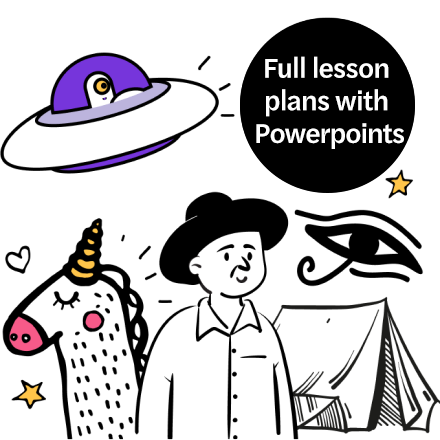KS2 English & PSHE Lesson Plan – Use Roald Dahl To Help Children Think About People’s Hidden Depths

Use three famous Dahl quotes about appearances and making first impressions to prove the age-old wisdom 'never judge a book by its cover'

- by James Clements
- Writer, researcher and independent English adviser Visit website

From the gruesome Twits to the loveable BFG, the characters that Roald Dahl created have enchanted children for generations.
In this lesson, pupils have the opportunity to explore three quotes from Dahl’s books about appearances and making first impressions.
These form the basis of a PHSE lesson considering how the people we meet in stories and real life can have hidden depths that might just surprise us. After reflecting on the implications of this, the children will then go on to create a set of guidelines to help us not jump to conclusions.
What they’ll learn
- Consider how conclusions based on appearances can sometimes be wrong
- Think about their own attitudes to others, both in stories and real life
- Create multifaceted characters and describe them effectively
Starter activity
To frame the ideas that will be introduced, ask the children to think about whether they have ever been surprised by a character in a story.
Have they ever assumed that a character will behave in one way and then been proved wrong? Has a character ever turned out to be very different from how they were presented originally?
Collect ideas and sort them into examples that could be true in real life (for example, a character who seems very selfish, but then chooses to help another character) and those that are purely from fiction (for example, an ordinary character who turns out to have magical powers).
Main activities
Dahl’s books are beloved the world over because of the wonderful stories they tell. But great stories don’t just entertain us; they help us to see the world in a new way.
Dahl’s well-known characters give children a vehicle to explore different ways of seeing the world. Discussing fictional characters allows pupils to talk about ideas in a concrete way, without having to use real people that they know. This avoids potentially sensitive discussions. A structured discussion will then give children the opportunity to apply their thinking to their own actions in real life.
1 | Powerful words
Divide the children into six small groups. Download and print these three Dahl quote posters and give each group one poster each. Ask each team to read their quote carefully and discuss what it might mean.Leaving this initial task open-ended will allow for a wide range of ideas and possible answers, but some groups might need further prompts such as, ‘Who do you think might be saying these words?’ or ‘Can you think of a situation from a book, film or television programme where these words would be true?’
Ask each group to feed back to the class about their quote, explaining what they think it means and why it is important for people to think about.
Having listened to each of the groups, ask the children to vote on which quote they think is the most important for people to know about. Record the findings on the board.
2 | Debate club
Next, tell pupils they are going to have a debate to decide which quote gives the best advice. The winning quote will be displayed in the classroom or school library.Give each group time to prepare their arguments about why their quote is the most important, before conducting the debate. Remind the children they can comment on the meaning of their quote and why it is important that people think about it. They could also comment on how thinking about this idea might affect how people behave to one another.
After the children have listened to each other’s thoughts, allow time for the groups to ask each other questions and respond.
Then ask the children to vote again. Have their choices changed? Have any groups been successful in persuading their classmates that their quote should be chosen and displayed?
3 | Character study
As a whole class, think about the messages they have taken from the three quotes and discussed in the lesson so far.Thinking back to their list of surprising characters from the starter activity, would any of the quotes apply to any of them? Challenge the children to explain how.
Tell students that they are going to invent a character who epitomises one of the quotes. It might be a character with a magical secret or someone who despite looking scary is actually kind and friendly.
After discussing their ideas with a partner, ask the children to write a short description of their character, trying to show their character’s hidden depths through rich descriptive language such as adjectives, figurative language such as metaphors and similes, and using senses other than sight in their description.
Finally, ask children to take it in turns to read their character description aloud to their group. Can the rest of the group guess which quote they had in mind when they were writing?
Extending the lesson
- The children can use their character as the basis of a piece of extended writing such as a story or diary entry that shows their complexity as a character.
- Use an art lesson to give students the opportunity to create their own poster of their chosen quote from the main activity. These could then be displayed around the classroom.
- Encourage pupils to interview one another in role or improvise what would happen if their characters met at a bus stop.
- Give children the chance to read the wonderful Roald Dahl books where the original quotes come from.
Download this lesson plan as a PDF along with the Roald Dahl quote posters here and browse more Roald Dahl Day ideas.
James Clements is an education writer and researcher who blogs at shakespeareandmore.com. Follow him on Twitter at @james_shmore.










